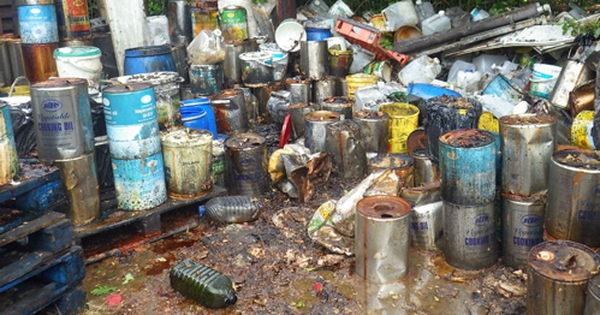Why can bloodworms, invertebrates, possess fearsome fangs like the sandworm in Dune?
Like a creature straight out of a horror movie, the bloodworm (Glycera dibranchiata) is an animal with pale skin that allows red body fluids to show through and is known for its jaws with strange fangs. They are made of protein, pigment and copper – a trait that cannot be found in any other organism in the animal kingdom.
Recently, and for the first time, scientists have discovered how these worms use copper harvested from marine sediments to create their jaws. The study discovered a new protein in the process, and is described in a publication in the journal Matter.

The genus Glycera is a group of polychaetes (hairworms) commonly known as bloodworms. They are commonly found at the bottom of shallow ocean waters, and some species (such as the common bloodworm) can grow up to 35 cm in length. Bloodworms are cream-pink, because their pale skin allows the red fluid that contains hemoglobin. This is the origin of the name “bloodworm”.
Bloodworms can burrow through mid-tidal mud (the land between high and low tide) to a depth of several meters, and they are quite similar in appearance to the sands from the sci-fi movie Dune – except that this is a moisture-loving creatures that live in places with more water and they only grow to a maximum length of 35 cm instead of being giant creatures.
They feed through their proboscis – an expandable, tubular sucker – equipped with four hollow black jaws and can inject venom, which is crippling to hapless creatures that fall prey. of them.

Bloodworms are carnivores. They feed by extending a large tornado with four hollow jaws. The jaws are connected to glands that deliver venom they use to kill their prey, and their bite is painful even for humans. They prey on other worms, benthic fish, crustaceans and gulls. Spawning occurs in midsummer, when warmer water temperatures and lunar cycles along with other factors cause sexually mature worms to enter a non-feeding phase called the terminal stage.
Study co-author Professor Herbert Waite, a biochemist at the University of California, Santa Barbara, USA, said: “These are extremely nasty and excitable worms. otherwise, they often fight using their bronze jaws as weapons.”
Their special teeth are also capable of piercing an exoskeleton of crustaceans, so the jaws need to be strong and supple enough to last through the worm’s five-year lifespan. blood, but this tooth forms only once in a lifetime and has no ability to regenerate.

The first stage in many bloodworm forms is the zooplankton stage followed by the benthic stage, where the familiar segmented red larvae develop protected by silk tubes produced in the benthic silt. . These larvae develop from small milky white worms to larger red larvae 3 to 10 cm or longer in a short period of about 2-3 weeks under good conditions. These animals are special in that they contain a lot of copper without being poisoned. Their jaws are unusually hard because they also contain metal in the form of copper chloride-based biomass, known as atacamide.
In Waite’s lab, scientists have been studying bloodworms for 20 years, but only recently have they been able to observe the entire biochemical process, forming their jaws, from start to finish.
The process is based on a protein they’ve just identified – a compound rich in the amino acids histidine and glycine called multi-tasking protein (MTP) – that performs six distinct functions that are important for cell growth. the function of bloodworm jaws.
The MTP collects and selects copper ions to form a complex and then condenses itself into a viscous, protein-rich, copper-rich liquid and separates the phase from water.
The protein then uses copper to catalyze the conversion of the amino acid derivative DOPA (dihydroxyphenylalanin – 5 times faster) into melanin polymers; It then integrates the melanin and itself into thin membranes and fibers.
All of these produce jaw mechanical properties that resemble those of man-made metals.
Accordingly, we can use this process to easily synthesize different types of materials, however, it will require a complex process involving many different devices, solvents and temperatures. .
“We never thought that a protein with a simple composition, mainly glycine and histidine, could perform so many unrelated functions and activities,” says Waite.
The team hopes that by better understanding the bloodworm species, we can conduct this process in the laboratory, which could help streamline aspects of production that benefit industry.
“These materials could signal the way to better ways to manufacture and design consumer materials,” says Waite.
at Blogtuan.info – Source: genk.vn – Read the original article here



